Aviation Gallery

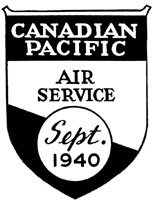 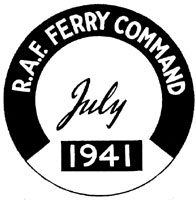 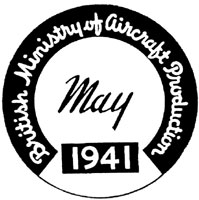 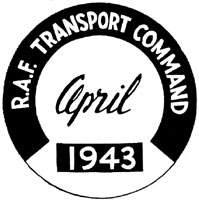 4 Logos from the RAFFC book |
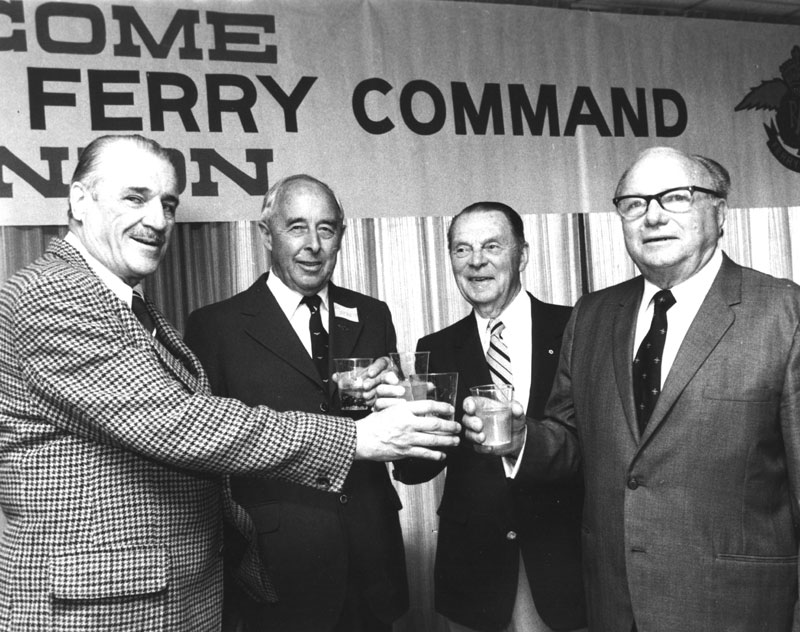 Don McVicar, D.C.T. Bennett, C.H. 'Punch' Dickens, and Griffith 'Taffy' Powell, skilled pilots and aviation heroes, at the 1980 Ferry Command Reunion in Dorval |
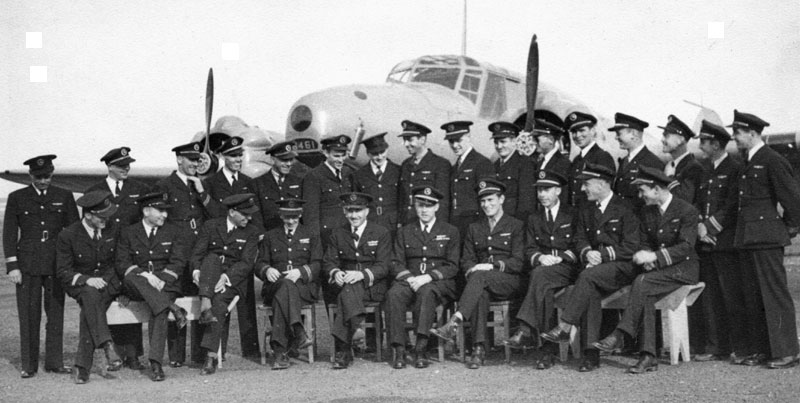 June 1941 class, No. 2 Air Observers School, #7 Hangar, Edmonton, Alberta, with Mark I Avro Anson behind them. "After I had built up my flying hours, I tried hard to get out of the AOS. No luck. With pilots at a premium on the prairies, my manager had decided we were all too valuable to be let go. His name was 'Wop' May and his main claim to fame was that it was he whom 'The Red Baron' was trying to shoot down when that World War One German ace was killed by another Canadian, Roy Brown." Back row, left to right: Ted Birch; Doug Littlejohn; Bill Cormack; Morris Fry; Ginger Coote; Don McVicar; Les Shears; Ab Coyne; George Johanneson; Gordon Latham; Art Irwin; Roy McHaffie; Don Jamieson; Dave Dyck; George Fletcher; Ralph Oakes. Front row, left to right: Spence Addeman; Bill Hodgin; Ab Hill; A. 'Westy' Westergaard; Norm Forrester; 'Wop' May; George Frank; Dave Kennedy; Frank Holdridge; Stan Seaton |
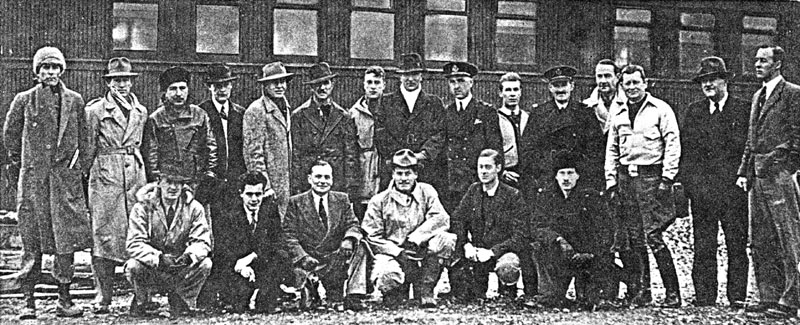 "On November 10th, 1940, the first flight of seven Hudsons, led by D.C.T. Bennett —the Australian long-distance record holder— took off from Gander, Newfoundland. They were supposed to cross in formation, but the North Atlantic weather soon scuttled that idea. Yet to everyone's surprise, all seven landed safely at Aldergrove, Northern Ireland, on their own. Radio bearings and old time pilotage had led them in. A week later, a second group of seven also arrived safely. One aircraft of the third flight crashed, but the crew escaped unharmed. It was a successful conclusion of the first part of a great effort." Photo: Some of the aircrew from the first Hudson deliveries. Standing: W.B. Lyons; D.L. Gentry; R. Adams; C.M. Tripp; W.C. Rodgers; J.A. Webber; J.D. McIntyre; S.T.B. Cripps; N.G. Mullett; A.M. Loughridge; A. Andrew; N.E. Smith; G.R. Hutchison; J.W. Gray; D.C.T. Bennett. Kneeling: D.B. Jarvis; H.G. Meyers; J.E. Giles; E.F. Clausewitz; K. Garden; W.T. Mellor. |
 "During the winter of 1940-41, deliveries continued through good weather and bad. More Hudsons, along with monstrous B-24's, the four-engine Consolidated Liberator... (which)... which had enough gun turrets to defend itself..." This photo is of the first Liberator to pass through Gander airport on its way to be delivered to the UK. |
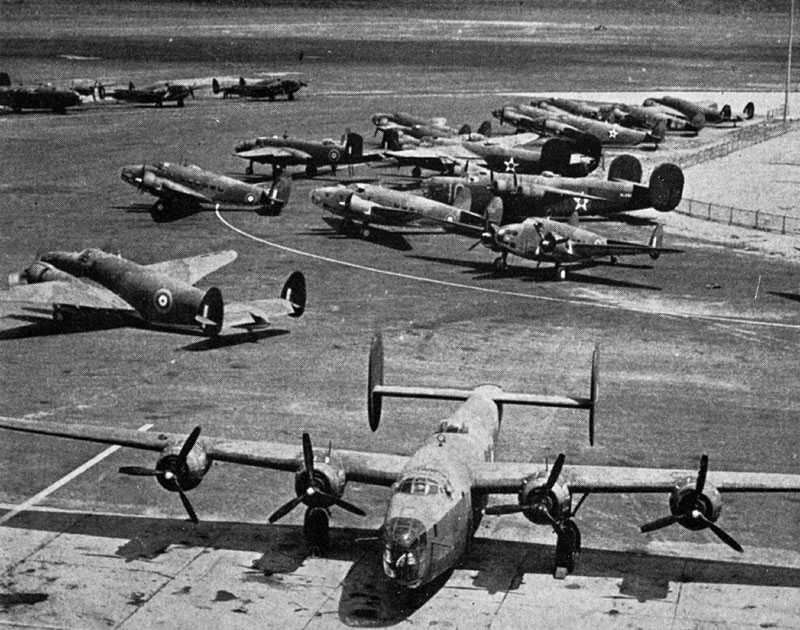 "In the distance I could see a line of twin-engine bombers, Lockheed Hudsons, the aircraft which would determine my immediate fate. I would have to pass a flight check on the Hudson, and I'd never even seen one before." Photo: Aircraft at Dorval Airport awaiting delivery, a line of Hudsons behind the B-24 Lib parked in the front. |
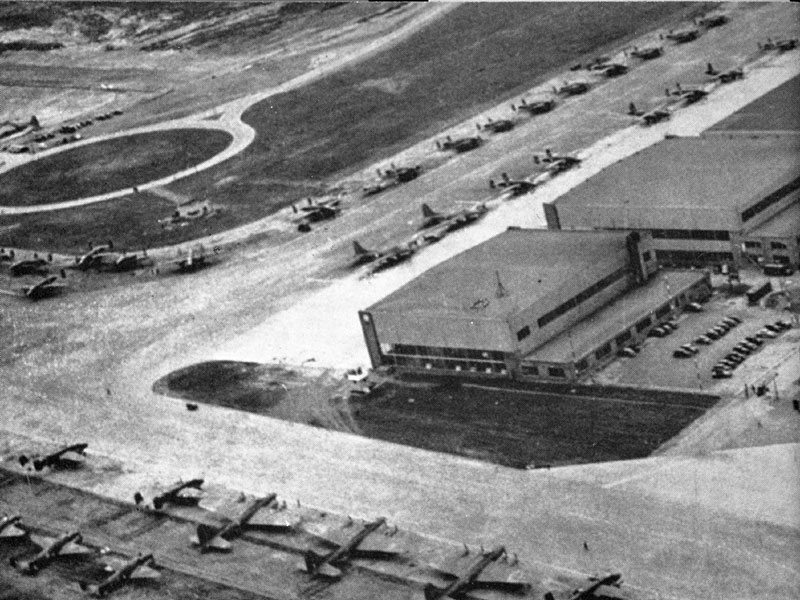 "...the construction of a new airport at Dorval was pushed hard. In the blink of a government eye, relatively speaking, its three runways and spacious hangars were ready to accept and dispatch aircraft in September." Photo: Dorval Airport in summer, circa 1941 |
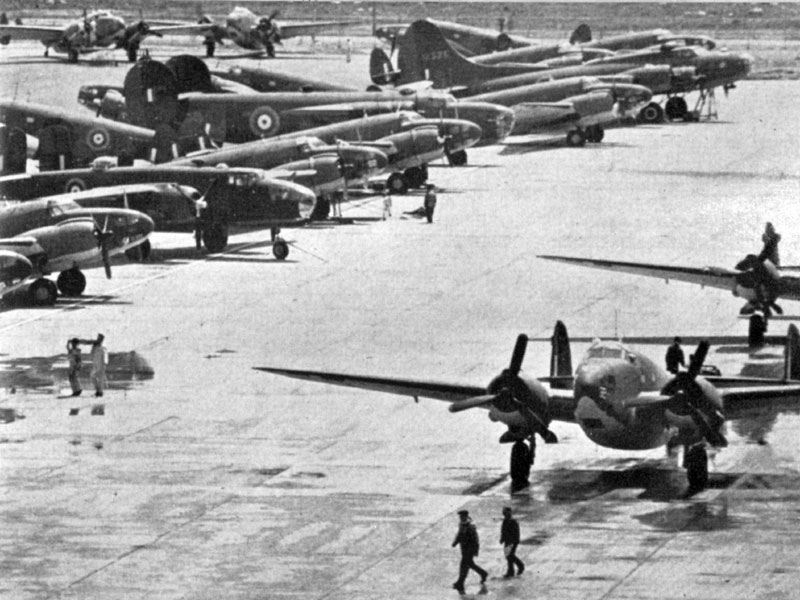 Tough to find a parking spot at Dorval circa 1941! Mainly Hudsons, but there are a few Mitchell B-25s in the lineup. |
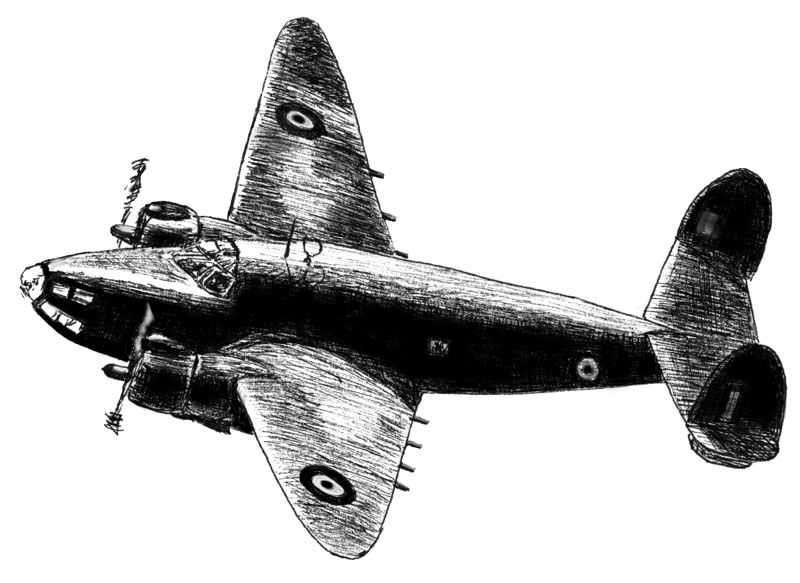 Lockheed Hudson (DMK) "The Hudson is an honest aircraft with damn good single-engine performance. If you handle it like the Thoroughbred it is it'll treat you just fine. Abuse it and it'll bite back. Ferry Command figures it's the perfect aircraft for checking out new pilots, because the guys who can fly her can fly anything ever built." |
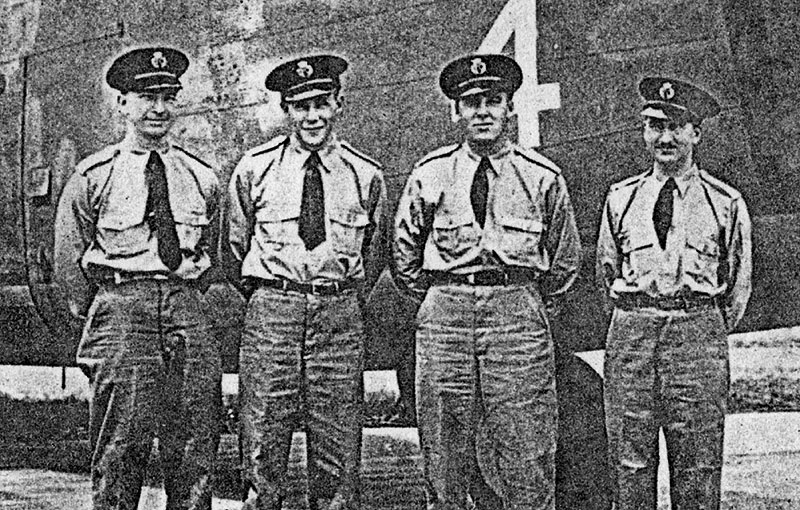 "Jack Parkinson...was another westerner with a quick sense of humour. His nickname was 'Indian Jack.' He was tall and slim with bright black eyes and shiny black hair. His face had an uncanny resemblance to that of a rhesus monkey. He'd made his escape from No. 3 AOS at Regina." Photo: Ferry Command aircrew, Harris, J. Parkinson, Capt. Bradley, Gorman |
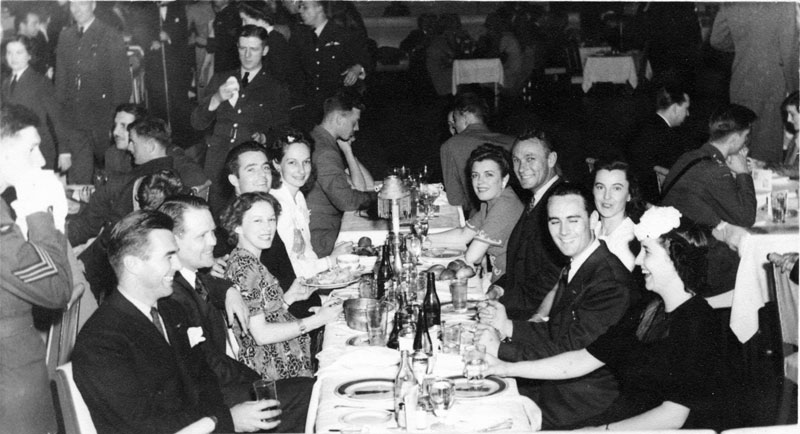 The Piccadilly Club was not the only hotspot for Ferry Command crew, and every other branch of the armed forces. Many uniforms were to be seen at Montreal's famous Normandy Roof, New Year's Eve, 1941. This was a photograph supplied to my father after the publication of Ferry Command in 1981. Some of the people were identified in pencil on the back of the photo: In front, at right, is Gracey Ruggles and across from her is Capt. Jack Ruggles. Next to him is Capt. Bud Merrill; and at the back of that side of the table are Capt. King Parker and Carol Parker. Captains Ruggles, Merrill and Parker were mentioned in Chapter 20, "Java Bound" as being among the Ferry Command B-25 pilots who delivered "...Dutch aircraft into American bases with RAF civilian crews" across the Atlantic, across Africa, to India and some to Australia. Java had just surrendered to the Japanese the day that the B-25s had reached India. |
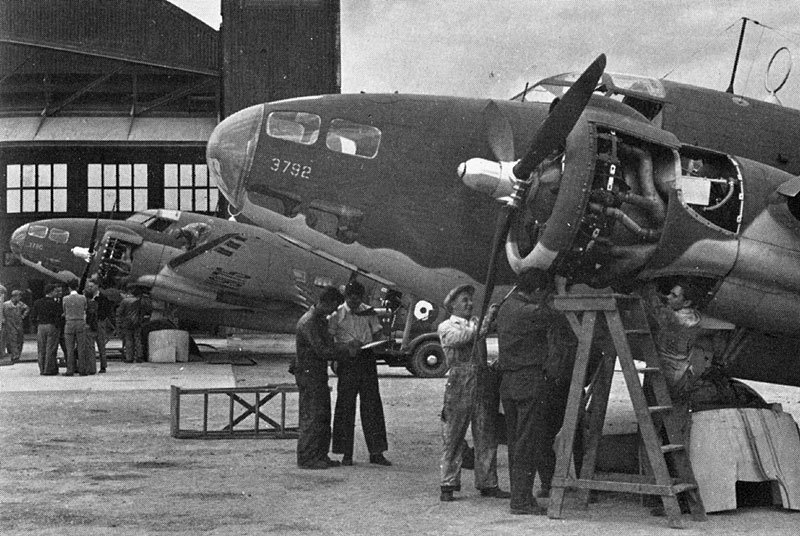 Hudsons getting delivery check as they pass through Gander, Newfoundland, in 1941. |
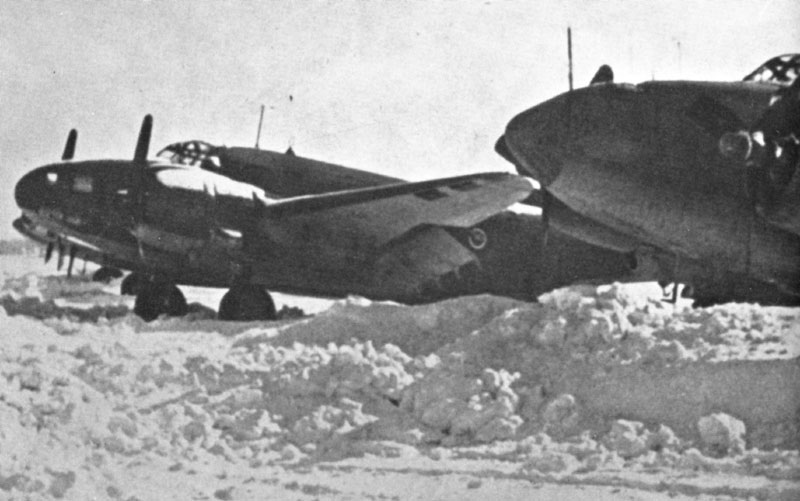 Hudsons at Dorval Airport during a typical Canadian winter. |
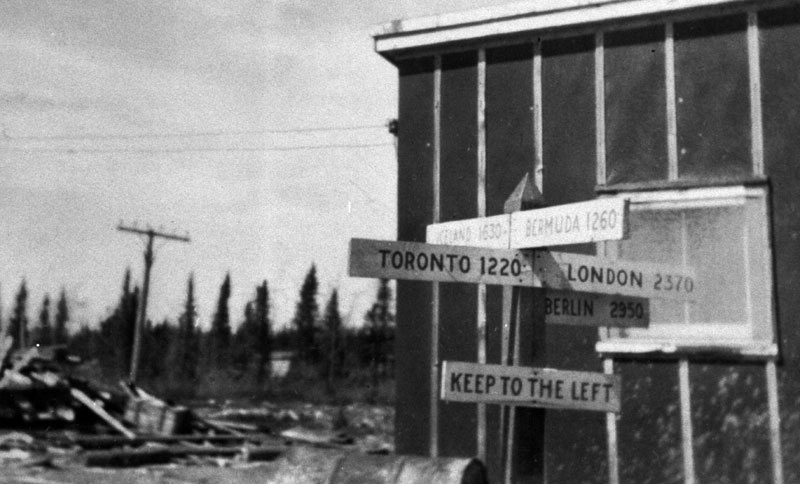 Signpost at Gander Airport, Newfoundland, 1942 |
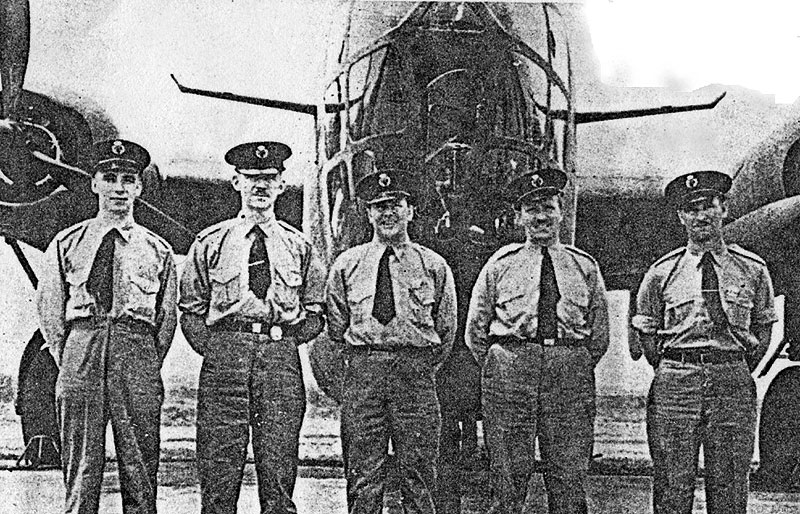 "(Evans') flight engineer would be Gail Swaney, (a Canadian) who was a touch on the boisterous side, but long on experience in maintaining aircraft in the bush." Photo: Ferry Command aircrew Reeves, Fred Johnsen, Capt. A.J. Lilly, F. Baillie, Gail Swaney |
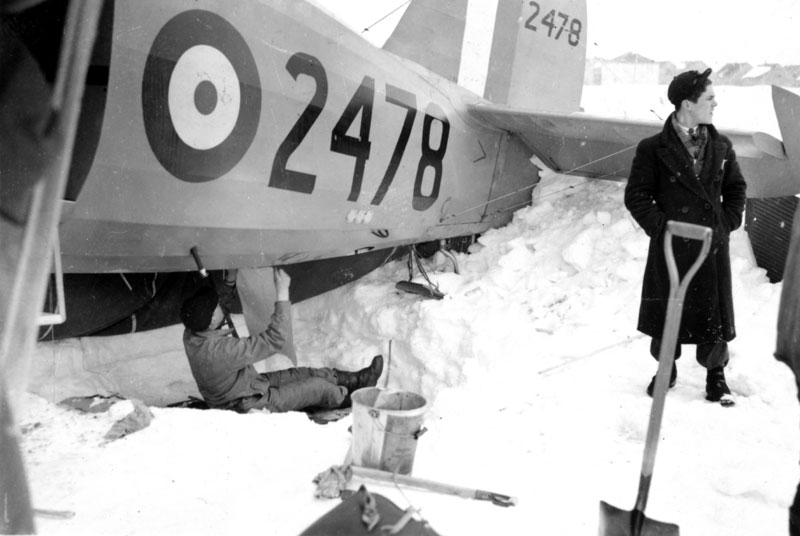 "On what turned out to be my last effort (to take off) I tried too hard and slipped off the strip— there are no brakes on skis! The structure of 2478 was only slightly damaged, but I'd ripped a big hold in the fabric covering the belly. A jagged tree stump hidden beneath the snow had done me in. Baker looked at the damage and said the bent aluminum ribs could be straightened easily...(They) dug a hole in the snow, where Baker lay on his back while he carried out the repairs..." Photo: Bill Baker repairing belly of Norseman 2478 |
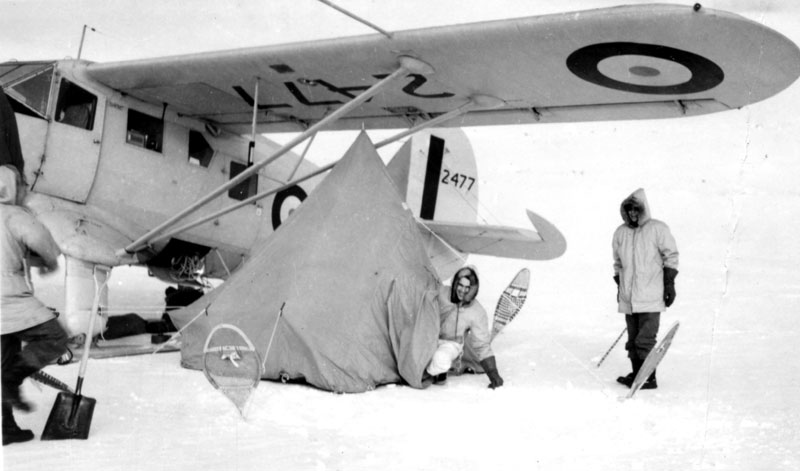 "For the time being, life in the Arctic was a picnic." Camping under the Norseman's wing after being forced down at "Crystal Zero;" the author is emerging from the cooking tent, while Bill Baker stands close by, looking very cold. |
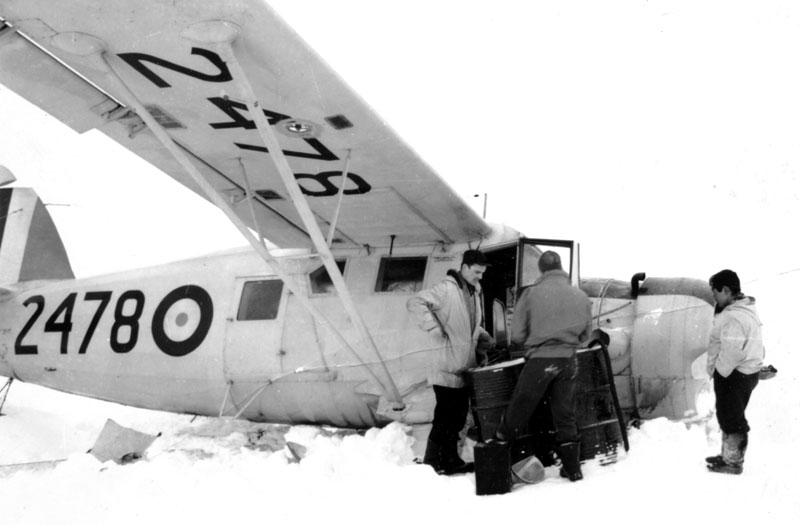 "But just one thing saved our lives. The Norseman fell into a twenty-foot layer of soft snow, which cushioned the crash...As we pushed our doors open against the bank of snow I grabbed the fire extinguisher, while Baker clutched his camera. Maybe I had always subconsciously wanted to be a fireman. Maybe Baker had always wanted to photograph an aircraft accident..." Captain McVicar inspects crashed Norseman while Inuit man looks on. Photo by Bill Baker |
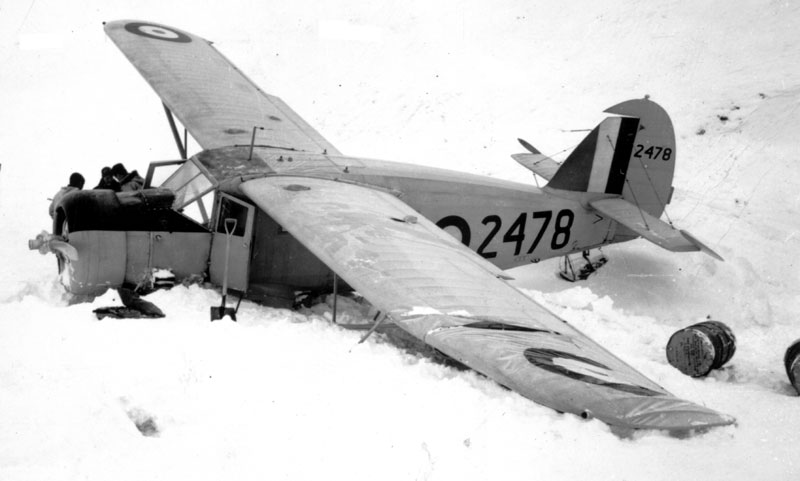 "If the aluminum tank had split, raw gas would have soaked us and the hot engine. It would have been 'whoomp' and goodbye. A McVicar/Baker roast." Photo: Another view of Norseman 2478 soon after the crash. Photo by Bill Baker |
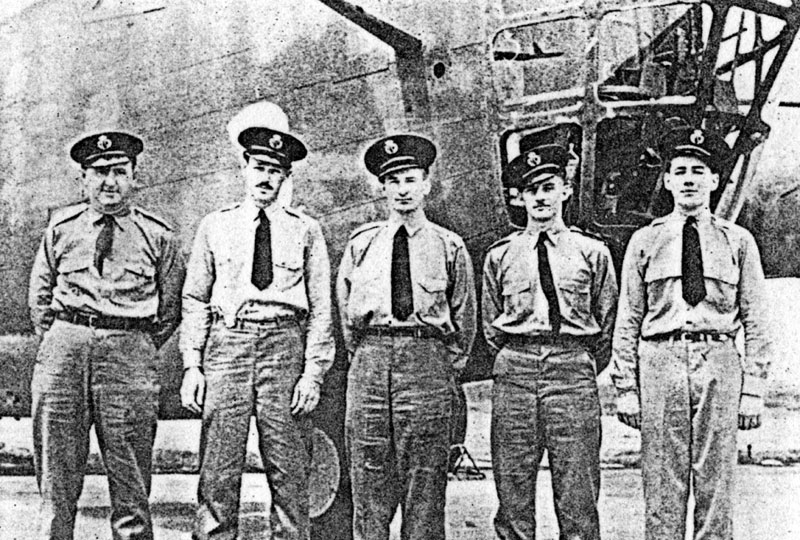 "Bisson...quickly reacted. He snatched the Norseman off the snow right on the edge of a stall. We staggered into the air and cleared the rock by a few inches...He turned to me and said, 'Don, that's the second time you saved my life.' 'Mine too,' I answered..." Photo: FC aircrew, Mackay, Ross, Capt. Louis Bisson, Griffiths, King |
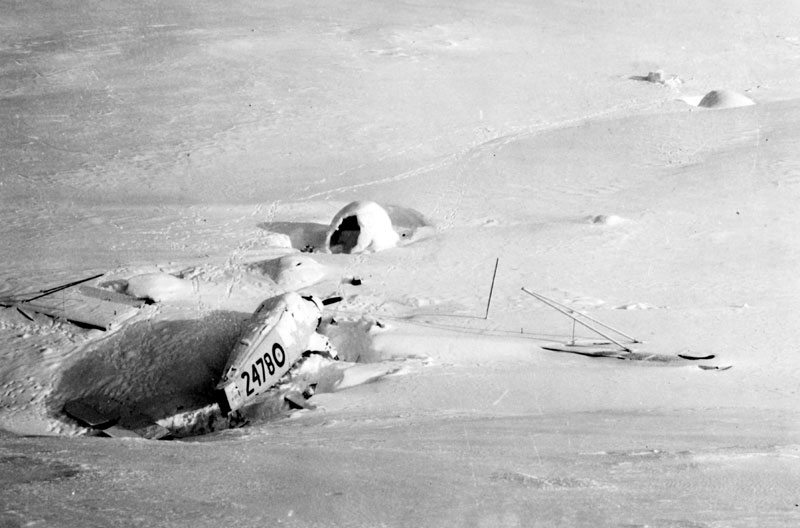 "As we approached the bay, we ran out of clear air, catching me between cloud layers. Not what I wanted. But again I was lucky. After diving through a hole in the undercast there was Crystal Two just where we'd left it. It had a new airport marker: my yellow Norseman, also just as we'd left it." Photo: Aerial view of the crashed Norseman, dismantled for shipment; note nearby igloo. |
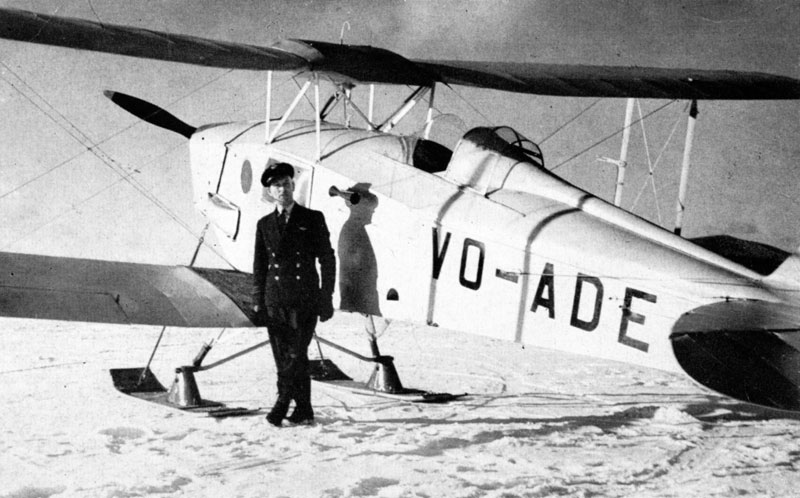 One of Ferry Command's ski-equipped search and rescue deHavilland Moth, with Captain Joe Gilmore ready to fly out from the Gander base. |
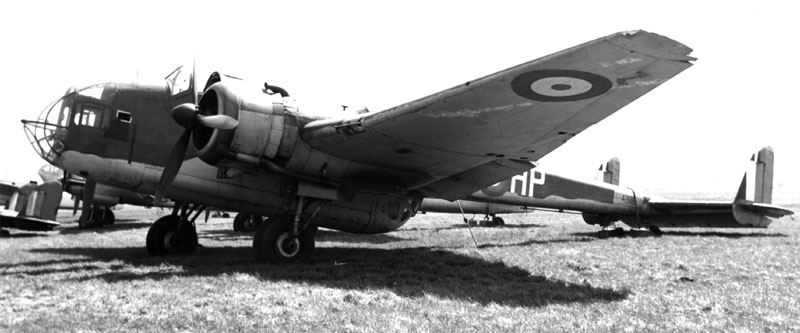 "On March 24th, Hunter Moody checked me out in a Handley-Page Hampden AN148. It was a twin-engine light bomber being built in Canada from a prewar English design, already considered obsolete for operations." Photo: Handley-Page Hampden |
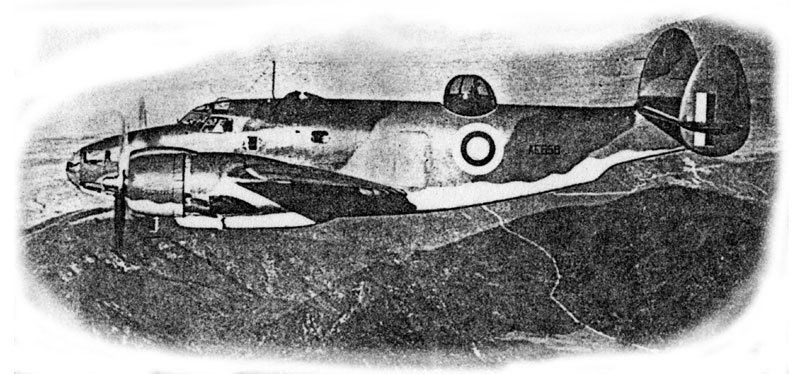 "...I took the opportunity to have my Ferry Command pilot competency certificate endorsed for a Lockheed Ventura...I really didn't like the big awkward beast. For me it was just a blown-up Hudson fitted with the much more powerful R-2800 engines." Photo: Lockheed Ventura |
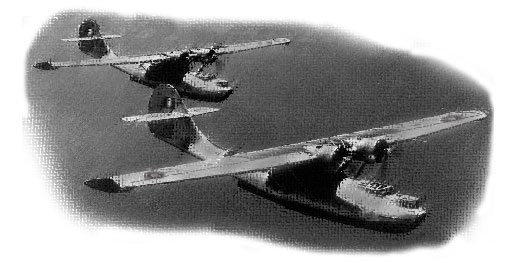 "No land in sight on either side. It was awfully lonely as I altered course to starboard. It took some time before the impressive, shining icecap showed low on the horizon...As we flew over the jaggedly indented coast I worked to pinpoint our position....Then I sighted what I at first thought was our own shadow proceeding up the fjord...Then I looked again. It wasn't our shadow, it was the other Canso." Illustration: Consolidated Catalina PBY flying boats, also known as Cansos in Canada |
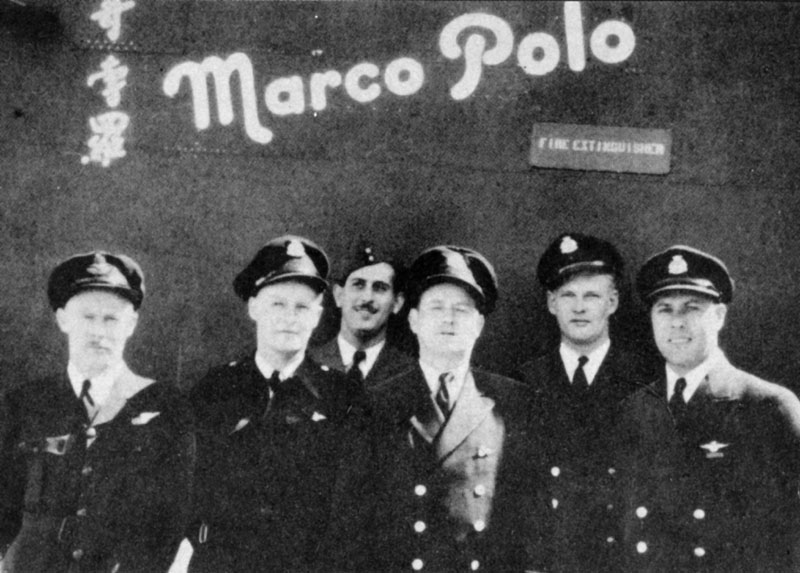 This was the only available photo of Captain McVicar's good friend and a terrific pilot, Captain George Evans, who is posed with his flight crew in front of the aircraft named the 'Marco Polo' after a flight to Chunking later in the war. Photo: Crew of the Marco Polo— From left, Flight Lieutenant H. J. Farley; Flight Engineer A. Wright; Flight Officer A. Colato; Radio Officer C.P. Meagher; First Officer E.C. Abbott; Capt. George P. Evans OBE. |
 "...We went out to check out our Liberator. It was a standard B-24D...with its guns removed...I felt a touch of claustrophobia as I inspected the windowless metal box, very glad to be part of the flight crew up front where I could see out." Illustration: B-24 Liberator (DMK) |
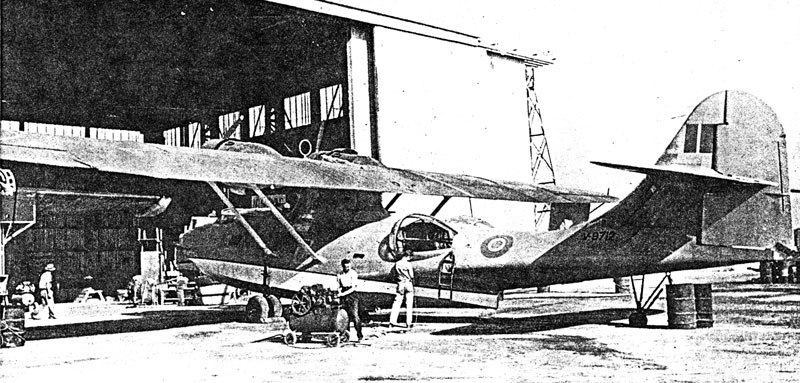 A Catalina flying boat being serviced. |
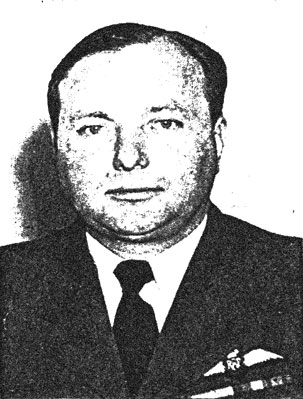 "Nine days for a round trip," Group Captain Powell said with a smile, "I consider that excellent..." Photo: Griffith 'Taffy' Powell |
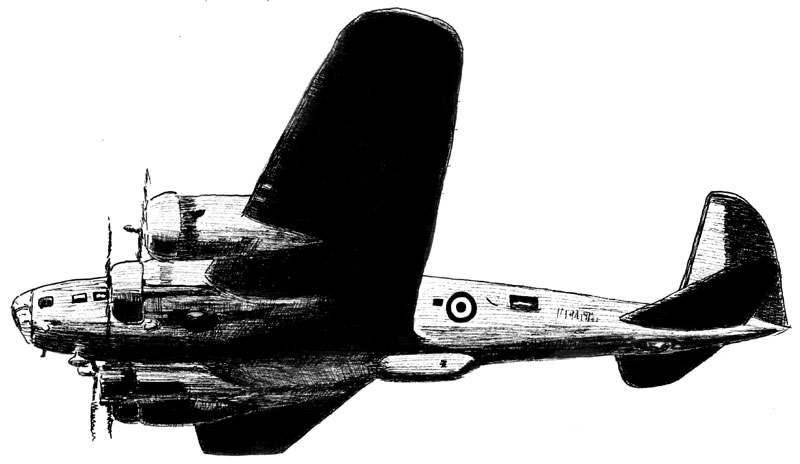 "...I took the opportunity to check out on Boeing B-17 Flying Fortress FK162. Once again Moody and Leeward shared check pilot duties..." Illustration: Boeing B-17 Flying Fortress (DMK) |
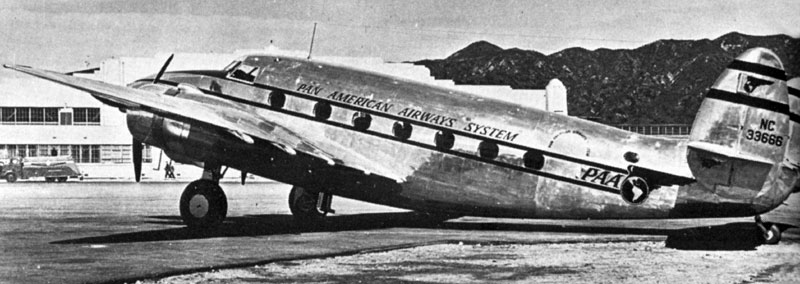 the Lockheed Lodestar was a reliable type that was flown worldwide and by many airlines. |
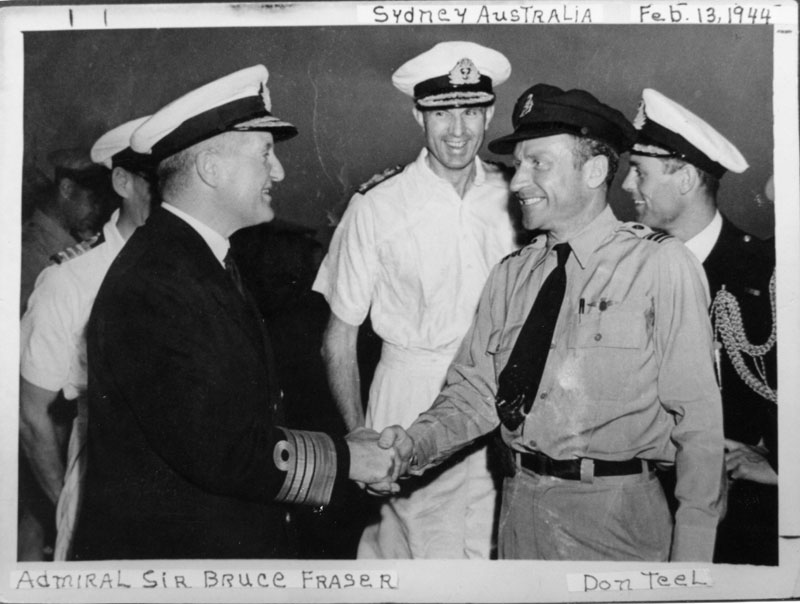 The very energetic RAFFC Capt. Don Teel, mentioned many times in the book, shakes hands with Admiral Sir Bruce Fraser. This photograph, supplied to my father by Capt. Teel, was taken in the South Pacific in 1944. |
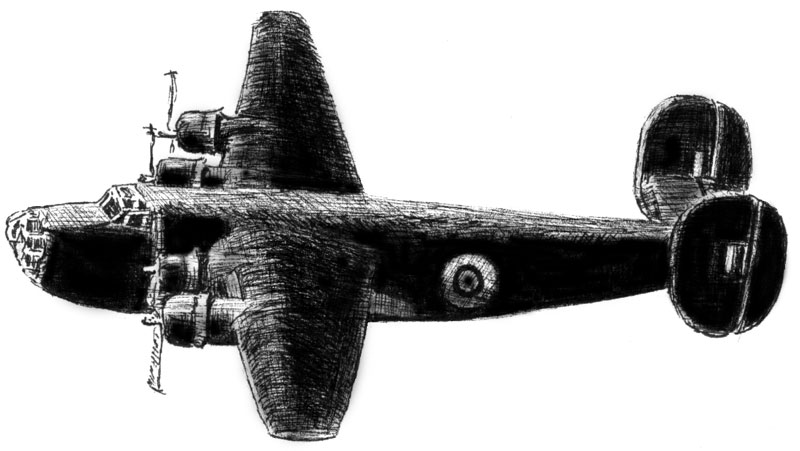 "This time I had drawn an old, rather beat-up LB-30, which stood for 'Liberator-British.' Except for its age it was almost identical to a current production B-24." Illustration: LB-30, "Liberator-British" (DMK) |
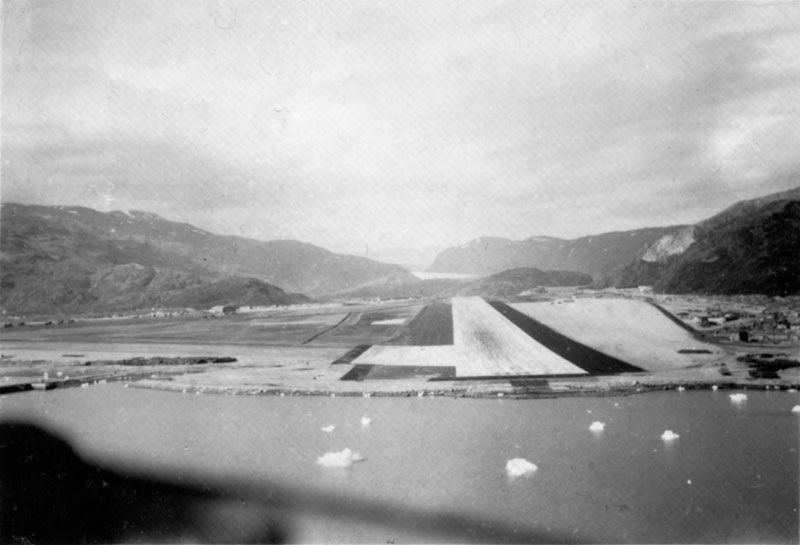 "...our big black bird was perched on the high end of the runway looking down at the cold green waters of the fjord. A brisk tail wind on the rudders made the pedals fight against my feet. Operations alleged the effect of the downhill slope would counteract the effect of the following wind. I sure as hell hoped they knew what they were talking about." Photo: Pilot's view of the sloping runway at BW1; note the 'ice cubes' in the fjord! |
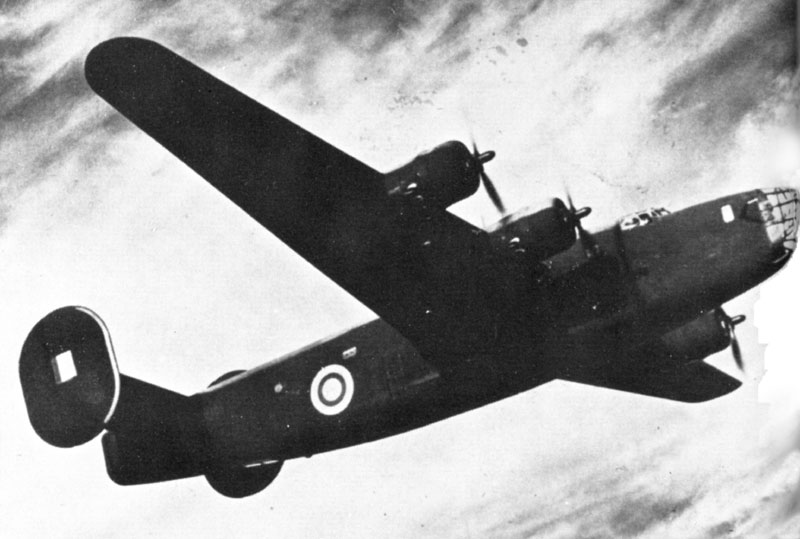 "The engines were roaring as minimum flying speed and the end of the runway appeared simultaneously. I heaved back on the big control wheel. This was not a place for delicate airmanship, and with a groan the Lib lurched into the air." Photo: Consolidated Liberator LB-30 |
 "...Crew Assignments advised me my next delivery would be one of the first B-25s to Prestwick. The RAF were starting to get their share. This suited me fine. I liked the fast twin and I'd made a study of the career of General W.L. 'Billy' Mitchell, after whom the aircraft was named." Illustration: front view of the Mitchell B-25 (DMK) |
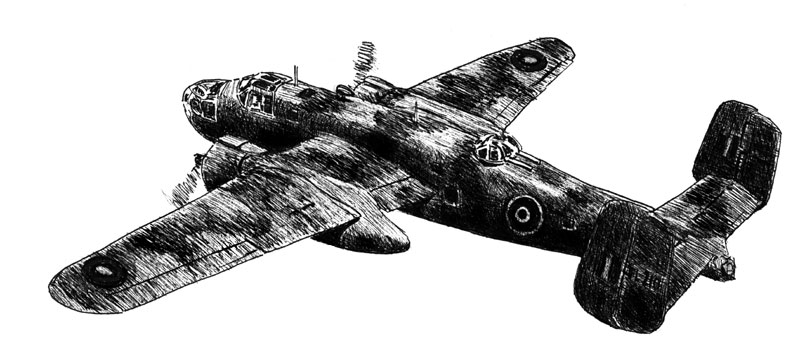 "This was the first Mitchell to fly over England, and the thought passed my mind that it looked like a Junkers Ju88 which had sown many tons of destruction. I hoped fervently that the anti-aircraft crews didn't suffer from itchy trigger fingers and had lots of aircraft recognition experience." Illustration: Mitchell B-25 in RAF camouflage (DMK) |
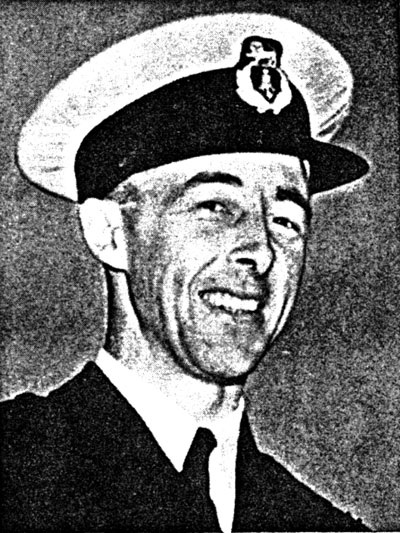 "On a recent operation (Don Bennett) had been flying a Halifax whose bombs were supposed to destroy the German battleship Tirpitz. It was an almost suicidal mission and the hellish anti-aircraft fire as he flew up the narrow Norwegian fjord had set his Halifax ablaze and shot off half a wing. He and his crew bailed out and he made his way from Nazi-occupied Norway to Stockholm in neutral Sweden. From there, in his usual forceful style, he convinced the RAF to provide him with a Hudson which flew him back to England. He was awarded a well-deserved DSO for his efforts." Photo: Ferry Command pioneer Captain Donald C.T. Bennett |
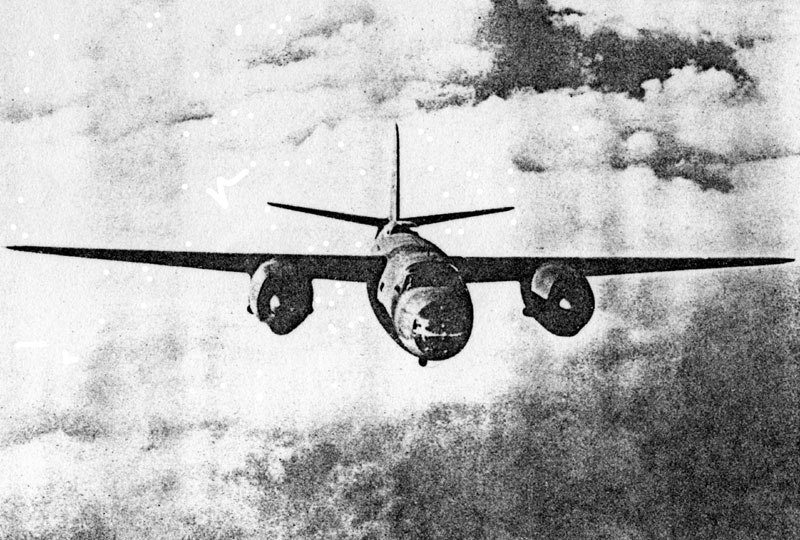 "And so I merrily volunteered to fly the aircraft which had already killed many men and which would come damn near to adding me to its lengthy list of victims." Photo: B-26 Martin Marauder |
|
|


Okefenokee Suite Giclées Available |
Botanicals Giclées Available |
Teapot Conversations Giclées Available |
Shell Fragments Giclées Available |
Line Art Notecards and Prints Available |
Water Giclées Available |
Dog Portraits Past Commissions |
Horses Past Commissions |
More Animals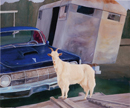 Giclées Available |
Donna's Ark (Whimsical Animals) 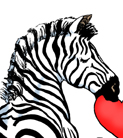 Many Products Available |
| Shelter Animal Portrait Project  Notecards and Prints Available |
Quartets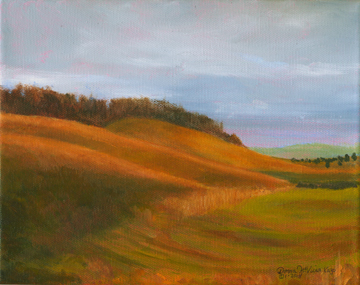 Originals Available |
Photo Contest Submissions and Results |
Miscellaneous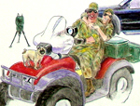 Past Commissions |
Confluence Past Issues |
Home - About Donna - Contact - Blog - How to Order - Artwork Index - Links
This site and its contents Copyright © 2012 Donna M. Kazo.
Proud to be hosted by Green Gator; powered by clean, sustainable wind energy.



